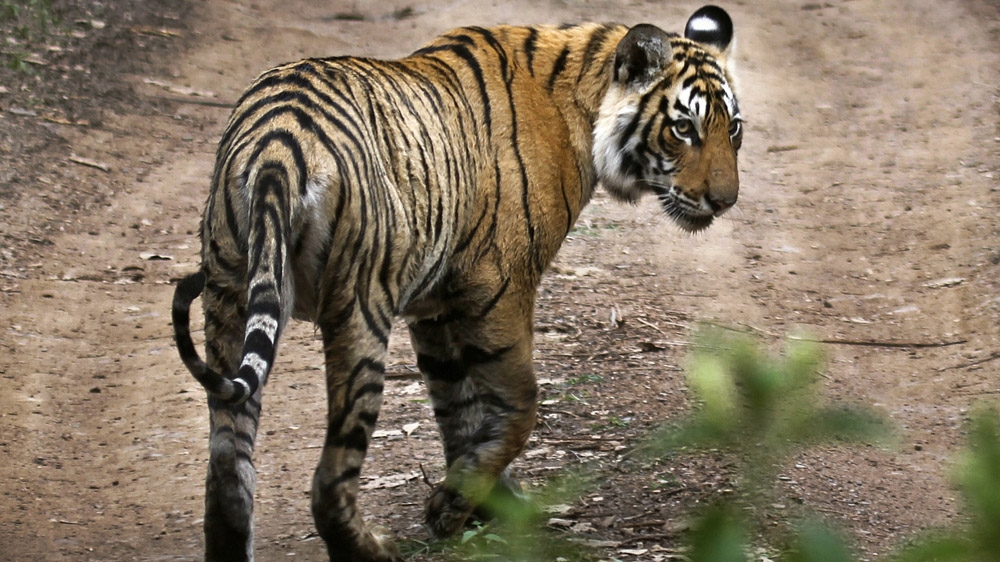India’s tiger population jumps to almost 3,000: census
Experts hail the conservation efforts, but habitat loss remains a concern for the country’s tiger population.

India’s tiger population has increased by more than 30 percent in the last four years, according to a new census, raising hopes for the survival of the endangered species.
The census, released on Monday to mark the Global Tiger Day, found 2,967 tigers in the wild across India, up from 2,226 four years ago in what Prime Minister Narendra Modi hailed as an “historic achievement”.
Keep reading
list of 4 itemsHong Kong’s first monkey virus case – what do we know about the B virus?
Indonesia hunts for ‘extinct’ Javan tiger
In Colombia, hunting poachers, not drug traffickers
“We reaffirm our commitment towards protecting the tiger,” Modi said in the Indian capital, New Delhi, as he released the All India Tiger Estimation Report 2018.
“Some 15 years ago, there was serious concern about the decline in the population of tigers. It was a big challenge for us but with determination, we have achieved our goals,” Modi said, adding that India was now home to three-quarters of the global tiger population.
The massive surveys are conducted every four years in India, with the latest census spanning 15 months and using 26,000 camera traps that took almost 350,000 images across known tiger habitats, Environmental Minister Prakash Javadekar said at the census release.
Images that showed the big cats were analysed using computer programmes to individually identify each creature. Wildlife and forestry officials said they scoured 380,000sq km of terrain for the census.
In 1900, more than 100,000 tigers were estimated to roam the planet, but that fell to a record low of 3,200 globally in 2010.
That year, India and 12 other countries with tiger populations signed an agreement to double their big cat numbers by 2022 – which India has now done.

The population of wild tigers in India has risen steadily since falling to the lowest-recorded figure of 1,411 in 2006.
However, they are yet to return the figures recorded in 2002, when some 3,700 tigers were estimated to be alive in the country.
It is believed that some 40,000 tigers lived in India at the time of independence from the UK.
Wildlife experts lauded the government efforts and said the rise in numbers heralded a new chapter in the conservation of the big cats in India.
“The scale and magnitude of the assessment is unparalleled globally,” Global Tiger Forum Secretary-General Rajesh Gopal said.
Man-made problems
Authorities across Asia are waging a major battle against poachers, who often sell tiger body parts to the lucrative traditional Chinese medicine market, as well as other man-made problems such as habitat loss.
India has sought to improve its management of the predator, reserving 50 habitat – from the Himalayan foothills in the northeast to regions in west and central India – exclusively for the animals.
At the same time, however, the country’s growing population has increasingly encroached into the territory of the wild animals, pushing them into frequent conflicts with humans.
More than 60 tigers have died or been killed so far this year across India, according to government figures. It is a crime to kill tigers, which are categorised as endangered under India’s Wildlife Protection Act.
Last week, a tigress was beaten to death by a mob, a day after it mauled one person to death and injured eight others.
Another tigress and her two cubs died last month after villagers poisoned the carcass of a cow it had hunted a day earlier.
Around 30 people were killed by tigers in India last year, according to the government.